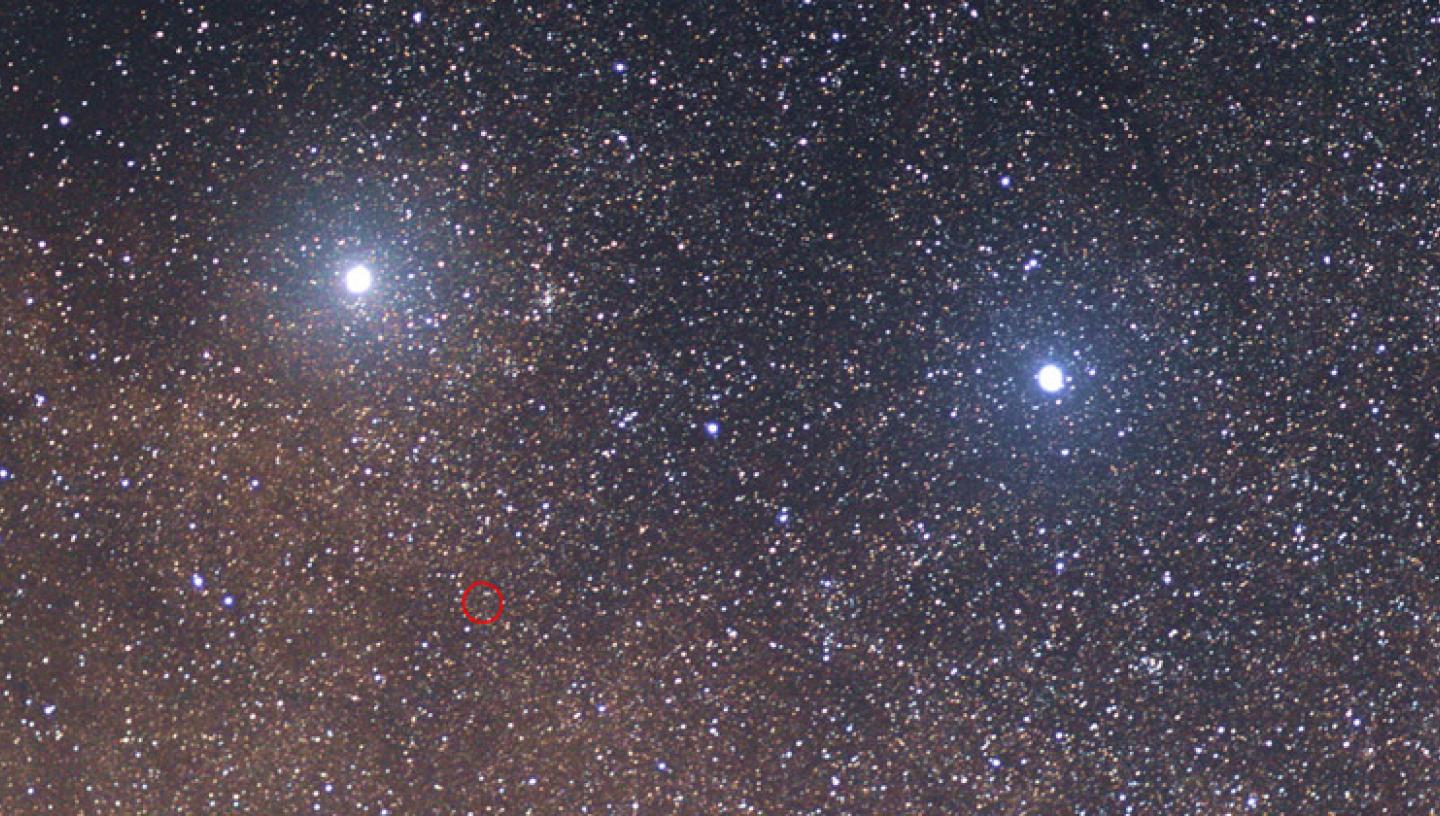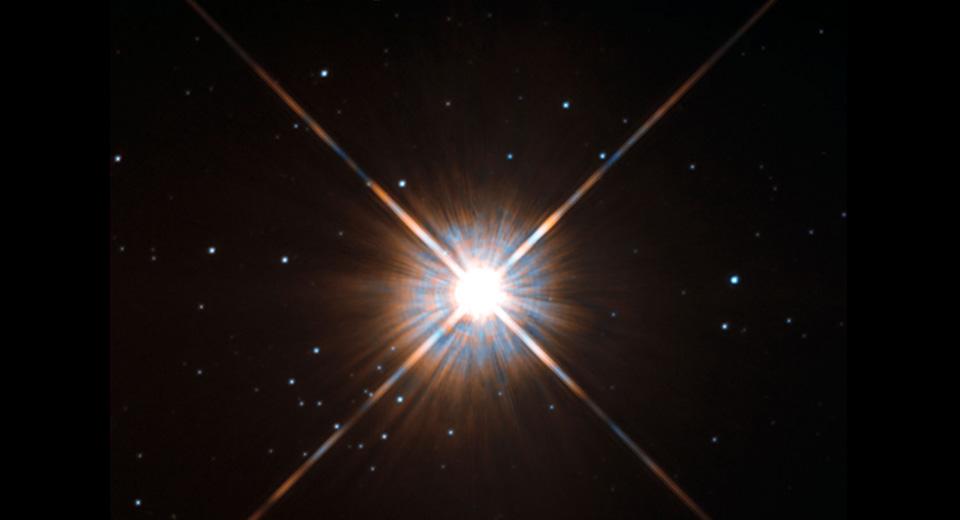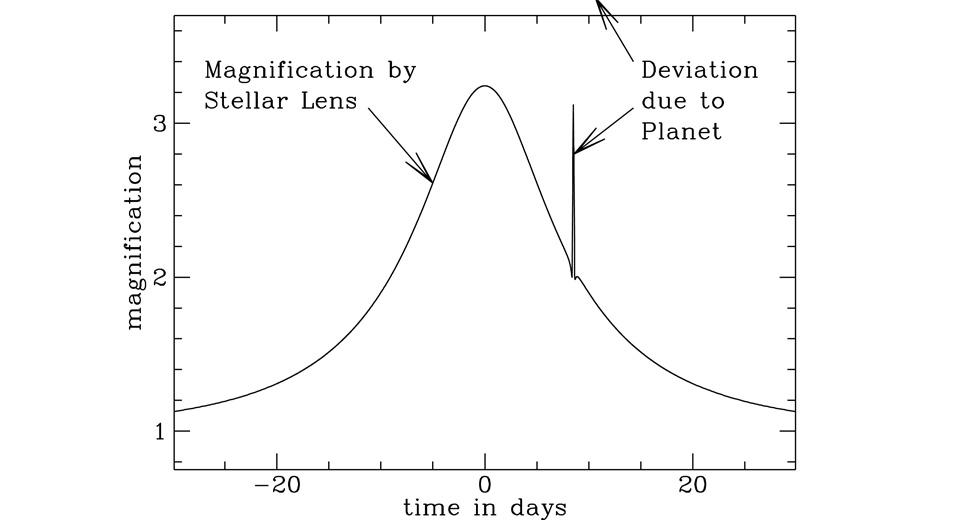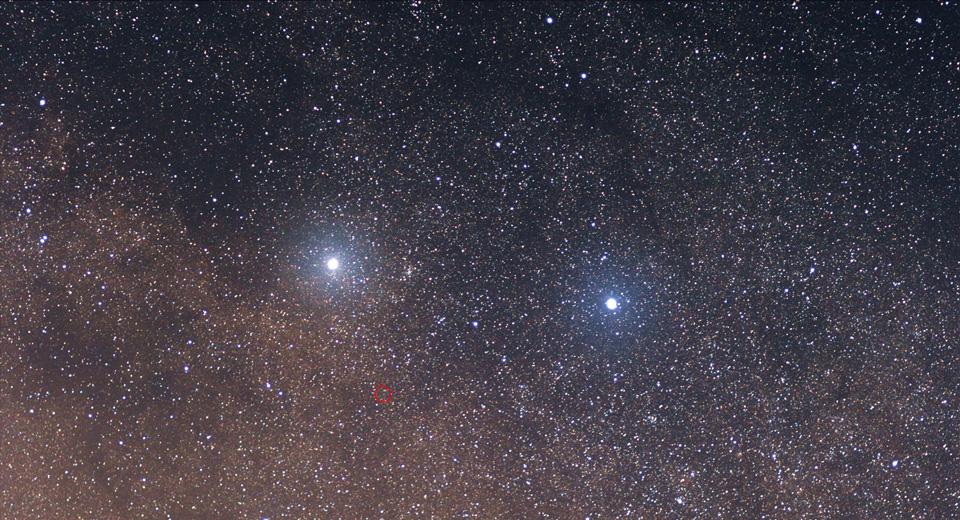
02 Feb 2016
A chance alignment of stars is set to help astronomers look for planets around Proxima Centauri – the nearest star to the Earth after the Sun. Astronomer Colin Stuart tells more.
Later this month it will fleetingly pass between us and a much more distant star. The presence of Proxima Centauri will bend the light from the background star in an effect known as gravitational microlensing. As more massive objects bend light more, astronomers will be able to use this event to ‘weigh’ the star.

Perhaps more excitingly, however, they can also look for the tell-tale signs that one or more planets are in orbit around it. That’s because any such planets would add a little bending of their own (see diagram).

Some exoplanets have already been found using this method. However, the number discovered this way is limited because you have to be looking at just the right time. That said, microlensing has been used to spot “rogue” planets – those thought to have been ejected from their home solar system and which wander through the darkness of space alone.
It is also possible that microlensing might have found the first ever moon discovered beyond the solar system, although we’ll never know for sure. Back in 2013, astronomers noticed the light from a distant star being magnified by two objects hurrying in front of it. They were able to work out the relative size of the duo compared to each other.
There are two possible scenarios to fit their picture – it depends on how close they were to Earth at the time. If they were far away, it is likely they were a smallish star and a Neptune-sized planet orbiting it. But if the pair was closer to us, it would have been a rogue planet being orbited by a moon. We can’t find out either way because the alignment will never happen again.
So microlensing is definitely an important tool in astronomers’ kit for hunting out potential habitable planets and moons beyond the solar system. And the upcoming passage of Proxima Centauri will give us another chance to look for worlds in our cosmic back yard.
